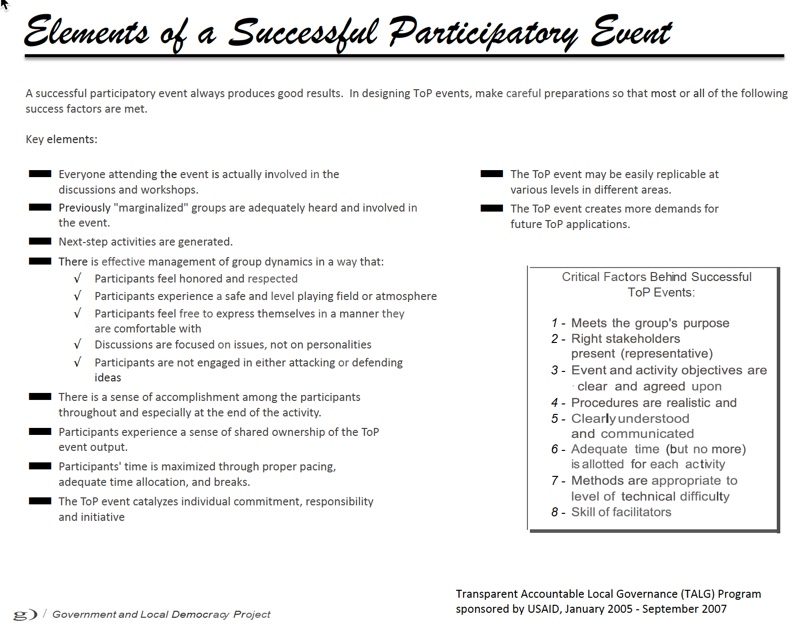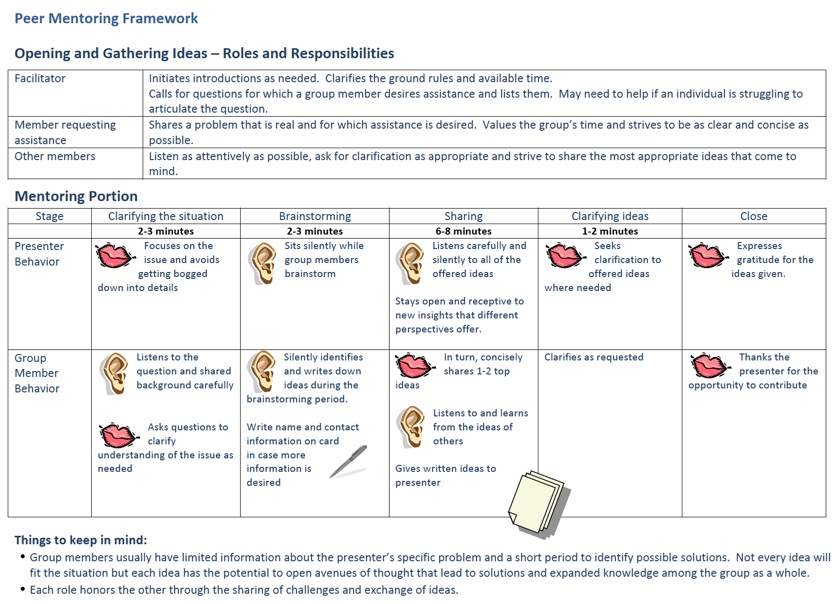- Home
- Membership
- Training & Certification
- Annual Gathering & Events
- Initiatives/Action Teams
- Resource Library
1. Scope the Event - Design For SuccessA. What do you need to accomplish?A first step in designing meetings for success is to take stake stock of what you want a meeting to accomplish.
With those two areas clear, the facilitator can establish the rational and experiential aims of the meeting and be purposeful in invitations.
B. How do you plan to accomplish it?When the People and Product are clear,,, T.E.A.M.S. is a handy acronym for five critical considerations:
C. How will you define success?
A hallmark of ToP events is participation. A successful participatory event requires careful preparation with close attention to assure success factors are present.
D. Where can you get help with your questions?The Peer Mentoring model generates lots of ideas in a short time to deal with a question. Highly structured, it allows a presenter to quickly share a question on which help is desired, followed by brainstorming approaches for consideration. The secret is in listening and brainstorming in silence. Creative ideas bubble up quickly. This resource provides instructions and the companion document, Peer Mentoring is...is not provides more detail about the appropriate use of this approach.
SESSION 1 RESOURCES FOR DOWNLOADPeople - Process - Product Tool PDF version with description of the elements T.E.A.M.S. for Effective Meetings T.E.A.M.S. Description Critical Factors for Successful Events Key Elements and Critical Factors Peer Mentoring Peer Mentoring Instructions Peer Mentoring is... is not
Go to:
|




